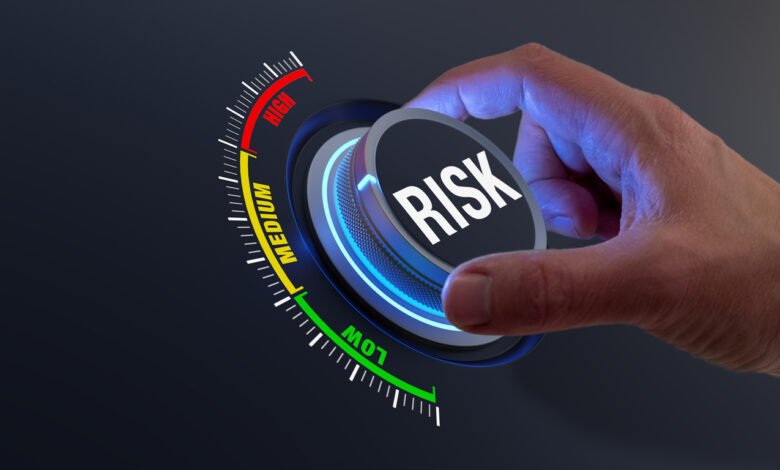Risk Management in Quantitative Trading: Strategies and Best Practices

For both risk-takers and smart investors, quantitative trading Risk Management—the skill of using mathematical models to negotiate the volatile conditions of financial markets—has emerged as a playground. All seasoned traders will tell you, nevertheless, that there are difficulties in this field that must be overcome in order to succeed techbloody. Let me introduce you to an important role: quantitative trading risk management. We’ll discuss best practices, examine methods, and learn how to start forex trading to navigate the erratic waves of the financial market with ease in this in-depth analysis.
What is Quantitative Trading, and Why Does it Need Risk Management?
Making trading choices with the help of mathematical models and algorithms is known as quantitative trading. These models do precise trade execution, pattern recognition, and historical data analysis. But the stock market isn’t exactly a peaceful lake. Danger lurks in every wave of this stormy sea. Risk management in quantitative trading thus takes on the role of a compass, guiding traders to remain on course and remain aware of the dangerous rocks that may lead to financial disaster. Let’s examine a few risks in more depth:
Market Risk
Utilizing quantitative trading comes with a significant market Risk Management. A domino effect might occur with your investments due to changes in commodity, stock, or currency prices. To deal with this, complex algorithms that take into account volatility measures, scenario analysis, and historical data must be used. Having a diverse portfolio of assets helps to fortify your position against unanticipated market fluctuations.
Model Risk
Models are fundamental to quantitative trading. However, if they are not properly examined and evaluated, these specific varieties might be dangerous. Stress testing, thorough validation, and regular backtests are some strategies to lower model Risk Management. To maintain your models flexible enough to react to shifting market conditions, regular evaluation and adjustment are required.
Operational Risk
Behind every algorithm is a complicated operational structure. The potential negative effects of technology, infrastructure, and human mistakes are all included in operational Risk Management. Strong operating rules, the use of redundant systems, and routine reviews are necessary to protect against problems with operations.
Strategies to Navigate the Storm: Risk Management in Action
Diversification:
In the realm of quantitative trading, relying only on an algorithm is like placing all of your money on a single roulette roll. The chances are not in your favor, but it may be profitable. The key to success is diversification. Invest in a variety of techniques to lessen the effect of a single failure on your portfolio as a whole. Remember that rather than making one big investment, it would have been better to have a more diversified strategy.
Position Sizing:
Size matters in the world of quantitative trading, but not in the way you would expect. The secret is to balance your risk tolerance against the market’s volatility to establish the best position size for each transaction. Traders can optimize position sizes to achieve a delicate balance between maximizing gains and reducing possible losses by taking into account variables including volatility, previous performance, and overall Risk Management tolerance.
Stop-Loss Orders:
In the razor-thin world of trading, stop-loss procedures are like having a safety net. Trading without stop-loss orders is strange. By automatically selling your assets as soon as their value reaches a certain level, these orders act as your backup plan. Large market drops are protected against predefined loss levels. Automated stop-loss orders that are executed on time ensure prompt responses to unfavorable market swings.
Scenario Analysis and Stress Testing
Skill is needed to anticipate the unexpected, and quantitative traders need this more than anybody. The performance of your portfolio in the situation of extreme market conditions may be accurately predicted with the help of scenario analysis and stress testing. One gets ready to face unfamiliar situations straight away by creating adverse conditions.
Best Practices for Smooth Sailing
Regular Check-Ins
The market is your guidance when it comes to quantitative trading. Regular check-ins will ensure that it’s pointing in the right direction. Unexpected events may occur in the market, and if you’re not paying attention, you can find yourself navigating straight into one. Stay vigilant, make necessary course corrections, and be ready to deal with the constantly changing financial environment.
Documentation and Review
Accuracy and attention to detail extend beyond algorithms to documentation. Processes for documentation and review provide transparency, accountability, and a foundation for post-analysis. The implementation of a strong record-keeping culture makes learning from accomplishments and failures easier.
Education and Skill Enhancement
Staying ahead in the fast-paced field of quantitative trading requires lifelong learning. Traders are better equipped to absorb new technology, hone their methods, and adjust to the always-changing financial scene through education and skill development.
Finally, Success isn’t guaranteed in the vast field of quantitative trading, but with the correct methods and a winning strategy, you can chart a path to navigate even the most unstable conditions. Improve your processes, properly calculate your position measures, and maintain a crisis leave process that is in place every time. Remember, there’s no need to focus on avoiding bets, only managing them, in the fluttering world of finance.



